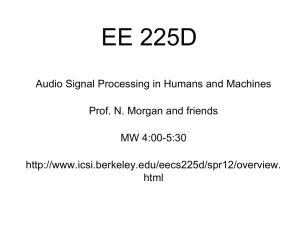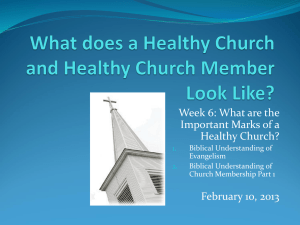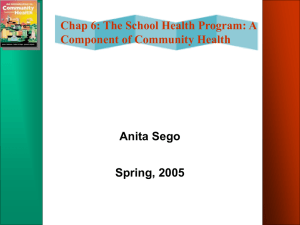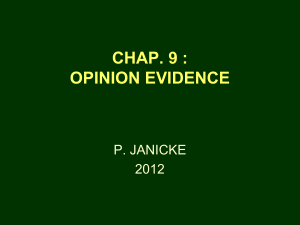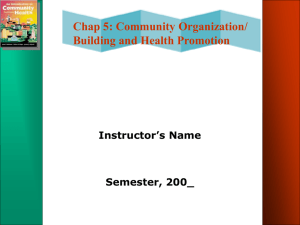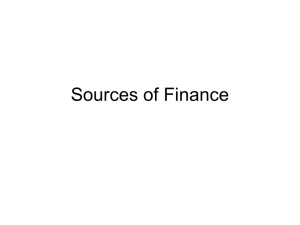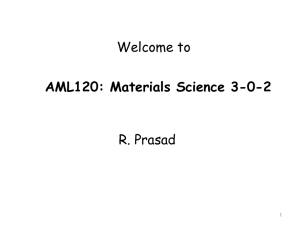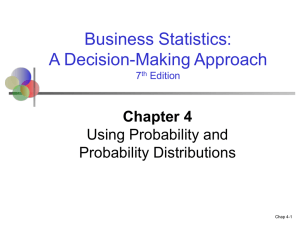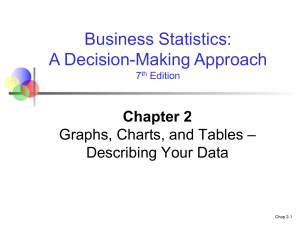Chapter 4
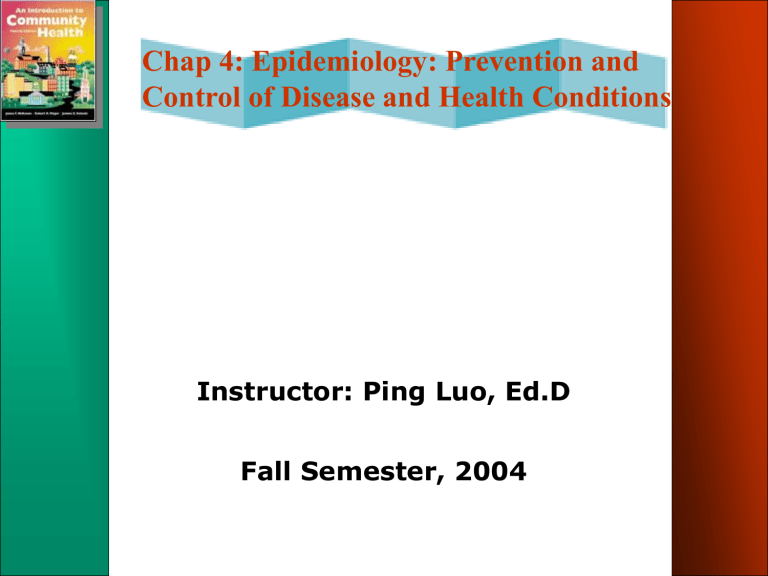
Chap 4: Epidemiology: Prevention and
Control of Disease and Health Conditions
Instructor: Ping Luo, Ed.D
Fall Semester, 2004
Chap 4: Prevention and Control
Chapter Objectives
• Explain the difference between communicable and noncommunicable diseases and between acute and chronic diseases.
• Describe and explain communicable and multicausation disease models.
• Explain why noncommunicable diseases are a community health concern and provide some examples of communicable and provide some examples of important noncommunicable diseases
Chap 4: Prevention and Control
Chapter Objectives
• Explain how communicable diseases are transmitted in a community using the “chain of infection” model and use a specific communicable disease to illustrate your explanation.
• Explain the difference between primary, secondary, and tertiary prevention of disease.
Chap 4: Prevention and Control
Chapter Objectives
• List and explain the various criteria that communities might use in order to prioritize their health problems in preparation for the allocation of prevention and control resources
• List and discuss the measures for preventing and controlling the spread of communicable diseases in a community.
Chap 4: Prevention and Control
Chapter Objectives
• List and discuss approaches to non- communicable disease control in a community.
• Define and explain the purpose and importance of health screenings.
• Outline a chronic, noncommunicable disease control program that includes primary, secondary, and tertiary disease prevention components.
Chap 4: Prevention and Control
Classification of Diseases &
Health Problems
• 4 Classification Schemes
• Organ or Organ System
– i.e., heart disease, kidney disease, respiratory infection
• Causative Agent
– Biological Agents
– Chemical Agents
– Physical Agents
Chap 4: Prevention and Control
Causative Agents for Diseases
&
Injuries
Biological
Agents
Chemical
Agents
Physical
Agents
Viruses
Rickettsiae
Bacteria
Fungi
Protozoa
Metazoa
Pesticides
Food additives
Pharmacologics
Industrial chemicals
Air pollutants
Cigarette smoke
Heat
Light
Radiation
Noise
Vibration
Speeding object s
Chap 4: Prevention and Control
Classification of Diseases
&
Health
Problems
Organ or Organ System
– i.e., heart disease, kidney disease, respiratory infection
Causative Agent
– Biological Agents
– Chemical Agents
– Physical Agents
Communicable vs Non communicable
Acute vs Chronic
–Peak symptoms within 3 months (acute) or longer than 3 months (chronic)
Chap 4: Prevention and Control
Types of Diseases Examples
Acute Diseases
Communicable
Noncommunicable
Chronic Diseases
Communicable
Noncommunicable
Common cold, pneumonia, mumps, measles, pertussis, typhoid fever, cholera
Appendicitis, poisoning, trauma
Tuberculosis, AIDS, Lyme disease, syphilis, rheumatic fever
Diabetes, coronary heart disease, osteoarthritis, cirrhosis of the liver
Chap 4: Prevention and Control
Communicable Disease Model
Model
Chap 4: Prevention and Control
Communicable Disease Model
Agent the element that must be present in order for the diseases to occur.
Chap 4: Prevention and Control
Communicable Disease Model
Host any susceptible organism invaded by an infectious agent
Agent
Chap 4: Prevention and Control
Communicable Disease Model
Host
Agent Environment all other factors that inhibit or promote disease transmission.
Chap 4: Prevention and Control
Chain of Infection
A model to conceptualize the transmission of a communicable disease from its source to a susceptible hose
Chap 4: Prevention and Control
Chain of Infection
Pathogen
• is the disease causing agent
Chap 4: Prevention and Control
Chain of Infection
Pathogen
Reservoir
• is the habitat in which an infectious agent normally lives & grows
• Human: symptomatic or asymptomatic
• Animal: called zoonoses
• Environmental: plants, soil, and water
Chap 4: Prevention and Control
Chain of Infection
Pathogen
Reservoir
Portal of exit
is the path by which an agent leaves the source host
Chap 4: Prevention and Control
Chain of Infection
Pathogen
Reservoir
Portal of exit
Transmission
• how pathogens are passed
Modes of Transmission
Direct
- Direct contact
- Droplet spread
Indirect
- Airborne
- Vehicleborne
- Vectorborne
Chap 4: Prevention and Control
Chain of Infection
Transmission
Portal of entry
• agent enters susceptible host
Respiratory
Oral
Skin
Intravenous
Gastrointestinal
Chap 4: Prevention and Control
Chain of Infection
Transmission
Portal of entry
New
Host
• Final link is a susceptible host
Chap 4: Prevention and Control
Noncommunicable Disease Model
Your genetic endowment
Chap 4: Prevention and Control
Noncommunicable Disease Model
Your genetic endowment
Behavioral choices
Chap 4: Prevention and Control
Noncommunicable Disease Model
Environment
Your genetic endowment
Behavioral choices
Air
Pollution
Chap 4: Prevention and Control
Prioritizing Prevention & Control Efforts
• Leading Causes of Death
• Years of Potential Life Lost
• Economic Cost to Society
Chap 4: Prevention and Control
Prioritizing Prevention and
Control Efforts
• Leading Causes of Death
• Years of Potential Life Lost
• Economic Cost to Society
Chap 4: Prevention and Control
Prevention, Intervention, Control, and
Eradication of Diseases
• Prevention
– primary
– secondary
– tertiary
• Intervention
– which is defined as taking of action during an event
• Control
– general term used in the containment of disease
• Eradication
– total elimination of the disease
Chap 4: Prevention and Control
Levels of Prevention
• Primary
Prevention
– is the forestalling of the onset of illness or injury during the prepathogenesis period
(before the disease process begins)
•Tertiary Prevention
– is to retrain, reeducate, and rehabilitate the patient who has already incurred disability
• Secondary
Prevention
– is the early diagnosis and prompt treatment of diseases before the disease becomes advanced and disability becomes severe
Chap 4: Prevention and Control
